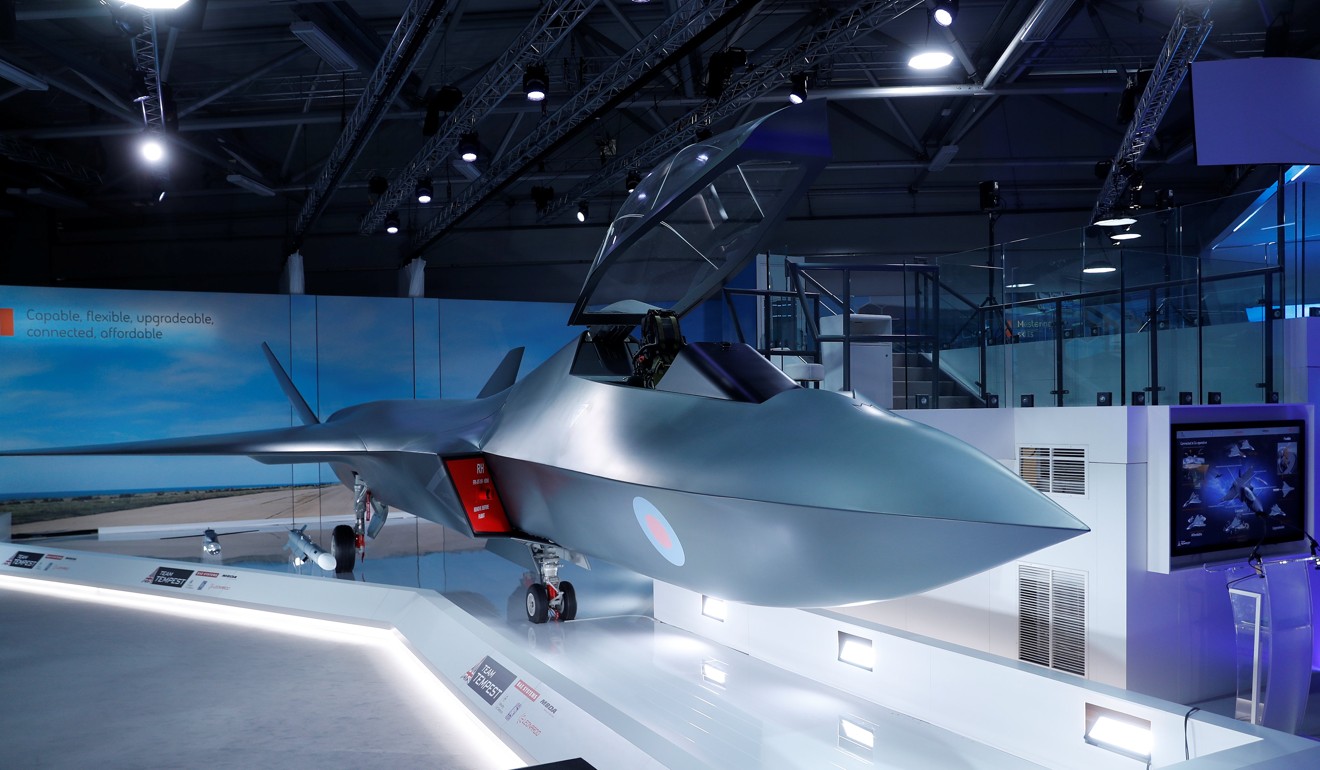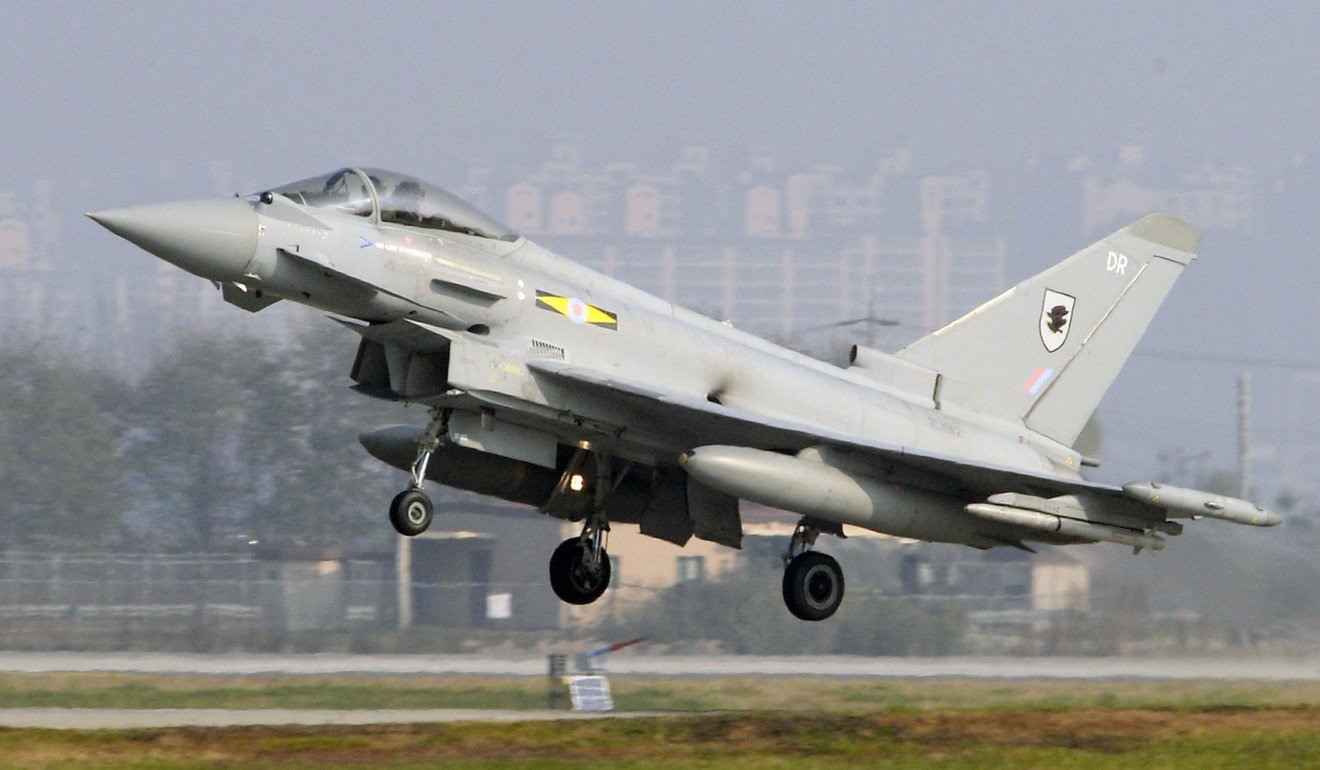
Fighter or drone? Britain’s hi-tech new Tempest warplane will be both
The Tempest, which will replace the Eurofighter Typhoon jet, is designed to be flown by a pilot either in the air or on the ground
Britain unveiled a model of a sleek proposed fighter jet named Tempest on Monday, raising questions about the future of European defence cooperation, given that Germany and France launched their own fighter jet programme a year ago.
At the Farnborough Airshow, Defence Minister Gavin Williamson said £2 billion (US$2.7 billion) had been earmarked to finance the programme out to 2025 and that Britain would seek international partners to provide additional funding.
The aircraft, meant to eventually replace the Eurofighter Typhoon jet, will be developed and built by BAE Systems Plc, Britain’s biggest defence company, alongside UK engine-maker Rolls-Royce Holdings Plc, Italian defence firm Leonardo, and European missile maker MBDA.
Unveiled before visiting foreign military chiefs and industry executives at the BAE chalet, the new jet can be flown by a pilot in the air or operated as a drone.

Germany and France are already working on a new jet, with the programme led by France’s Airbus, part of the Eurofighter consortium and Dassault Aviation SA, the maker of the Rafale.
Industry executives said the two programmes could eventually be fused, once Britain and the European Union sorted out Britain’s departure from the economic bloc in nine months.
Failure to unite around a single fighter programme risked further fragmenting the European defence market, but the decision was up to government leaders, Airbus’s defence chief Dirk Hoke told Reuters.
“If the politicians decide differently, we’ll have to adapt, but in my opinion that would be bad for Europe,” he said.
Leonardo Chief Executive Alessandro Profumo also voiced hope that Europe would unite around one programme. “It’s up to the governments, but Europe is moving more and more towards being unified. I have to be optimistic.”
Air Vice-Marshal Simon Rochelle from Britain’s Royal Air Force said Britain was having discussions with potential partner countries, including Sweden and Japan.


But experts say there is unlikely to be sufficient demand to support two separate European programmes, particularly given the high cost of developing a cutting-edge new aircraft.
UK plans call for the new jet to be operational by 2035, in time to replace the Typhoon fleet when it ends service in 2040.
The jet is the centrepiece of a new UK combat air strategy that Prime Minister Theresa May said was aimed at “maintaining our world-class air power capabilities.”
France announced in June that it would take a leading role on a new fighter programme that would start as a bilateral effort with Germany but could be expanded later.

A German defence ministry spokesman declined to comment on the UK programme, but said the Franco-German project was open to additional partners.
Michael Christie, BAE Systems strategy director for air, said Britain had the capability to develop Tempest alone but that it made sense to develop it with a partner given the cost and a desire to lock in future sales.
However, he added that BAE wanted to “play a leading role in whatever partnership that we are involved in.”
Britain has not developed a fighter jet alone since the 1960s. However, it helped develop and build the most advanced stealth fighter in the UK fleet, the US-made F-35, with BAE Systems carrying out about 15 per cent of the work on each jet.

